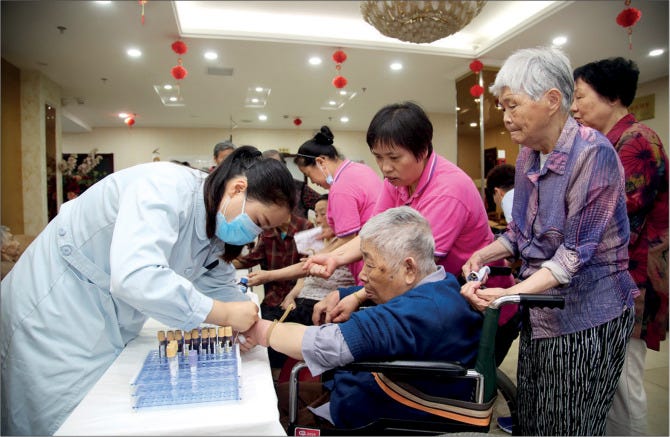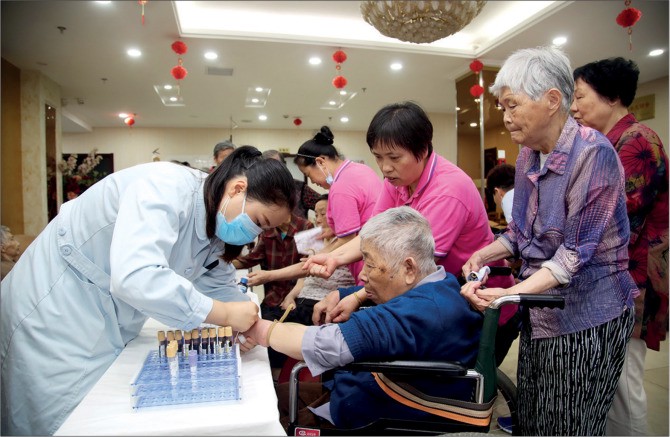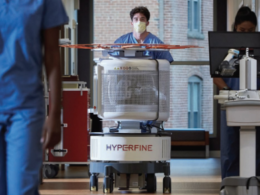Urgent need to invest in health and care workers
The Lancet
Mathieu Boniol, Amani Siyam, Khassoum Diallo James Campbell
May 23, 2022
This is a republication of the paper above on the 1st part, and with the particular situation for Brazil on the 2nd part.
Edited by
Joaquim Cardoso MSc
Health Revolution
Research and Strategy Institute for “Better Health for All”
May 25, 2022

Urgent need to invest in health and care workers
The Lancet
Mathieu Boniol, Amani Siyam, Khassoum Diallo James Campbell
May 23, 2022
Improved human resources for health (HRH) data are essential to monitor progress towards universal health coverage (UHC).1
The analysis by the Global Burden of Diseases, Injuries, and Risk Factors Study (GBD) 2019 Human Resources for Health Collaborators2 in The Lancet depicts a global distribution of the health workforce in 2019, showing a substantial shortage of five health occupations (dentists, medical doctors, midwives, nurses, and pharmacists) identified in all regions of the world.
This assessment capitalises on improved HRH data availability in the past 10 years, particularly through the progressive implementation of the National Health Workforce Accounts,1, 3, 4 and offers a more precise global picture than the analysis done by the GBD 2017 SDG Collaborators5 in 2017.
The inclusion of the National Health Workforce Accounts data — reported by countries, quality checked and triangulated by WHO with the addition of some indicators of labour force surveys, census data, and other data sources — is proof of its planned application and utility when introduced in 2017.
The National Health Workforce Accounts data also offset a reliance on labour force surveys that have known limitations in assessing health occupation densities.6
That said, the GBD estimation made for 2019 still shows marked uncertainties, with a variation of 9·7 million to 16·6 million in the estimated number of physicians, and 23·3 million to 37·7 million in the estimated number of nurses and midwives.
The 43 million shortage is an almost 2·5-fold increase over previous estimates
The 43 million shortage (6·4 million medical doctors, 30·6 million nurses and midwives, 3·3 million dentistry personnel, and 2·9 million pharmaceutical personnel) estimated by the GBD 2019 Human Resources for Health Collaborators (relative to minimum workforce density thresholds required to meet a UHC effective coverage index target of 80 out of 100) is an almost 2·5-fold increase over previous estimates (eg, WHO’s assessment in 2016, validated by 194 member states, which estimated a shortage of 18 million by 2030).3, 7
This is attributable to a high aspirational target (80 out of 100 in 2019) of a different UHC index that upholds a broader concept of service availability, use, and quality applicable to a range of ages across the lifespan.
This is attributable to a high aspirational target (80 out of 100 in 2019) of a different UHC index that upholds a broader concept of service availability, use, and quality applicable to a range of ages across the lifespan.
The threshold used in the present study subsequently results in most countries, irrespective of income grouping, having shortages, with up to three-quarters of countries requiring additional nurses and midwives.
Despite these methodological and threshold differences, the study’s key findings reinforce the key message from WHO’s Global Strategy on Human Resources for Health: workforce 20303 and the Working for Health Action 2022–30 Plan,8 namely, the crucial need for governments to accelerate investments into the education and employment of the world’s health and care workforce to achieve UHC and global health security.
there is a … crucial need for governments to accelerate investments into the education and employment of the world’s health and care workforce to achieve UHC and global health security.
Additionally, the trajectory to 2030 of health workforce availability and global shortages should be further assessed to identify strategic actions and interventions that are most needed.
The COVID-19 pandemic has had a substantial impact on the health and care workforce across the domains of health and social care working conditions and employment,9 which might have profound spillover effects on workforce attrition and retention.
Although the pandemic response increased the economic demand and health systems’ needs for health and care workers in vaccination, diagnosis, and treatment, questions remain about the medium-term and long-term economic scarring on national spending in education and health and social protection, and whether wages will grow.10
The future of the national fiscal space available to hire and maintain the necessary health and care workers in the coming decade is very likely to be further compromised by existing and unforeseeable future conflicts and humanitarian situations that will be detrimental to economic stability and growth.
More than ever, policy-driven actions are needed …
… by WHO member states, professional organisations, academia, and global health multilateral organisations to protect health and care workers, safeguard their rights, and promote investment in decent jobs for health and care workers.
The findings of the present study reinforce the calls to mainstream detailed, expanded, systematic, and sustainable HRH information systems and data collection through various population-based and institutionally based data sources.
This approach will ensure regular and sustainable data availability, validated by countries and informing sound health labour market analysis and will reduce reliance on ad-hoc modelled estimates.
Originally published at https://www.thelancet.com.

The situation for Brazil
Written by Joaquim Cardoso MSc
According to Dr Rafael Lozano, from the Institute for Health Metrics and Evaluation at the University of Washington, and the corresponding author, the situation for Brazil is detailed below.
To achieve UHC effective index of 80, these are the numbers for Brazil :

There is a shortage of:
- 645 thousand Professionals, including
- 173 thousand Physicians
- 373 thousand Nurses and Midwives
- 99 thousand Pharmacysts
In relation to Dentists, the analysis indicates an excess of workers:
- 44 thousands Dentists surplus
Names mentioned
According to Dr Rafael Lozano, from the Institute for Health Metrics and Evaluation at the University of Washington,












